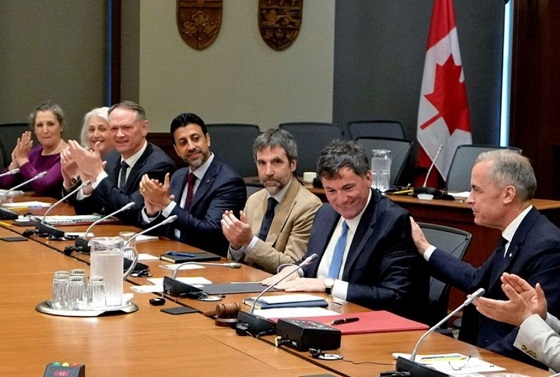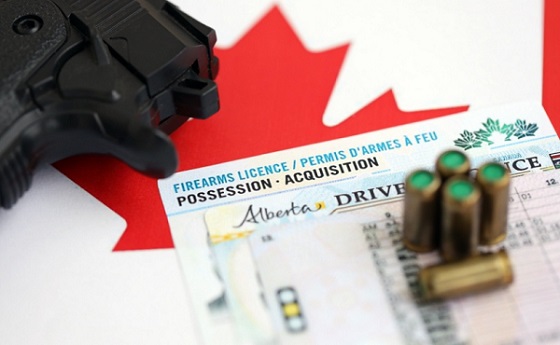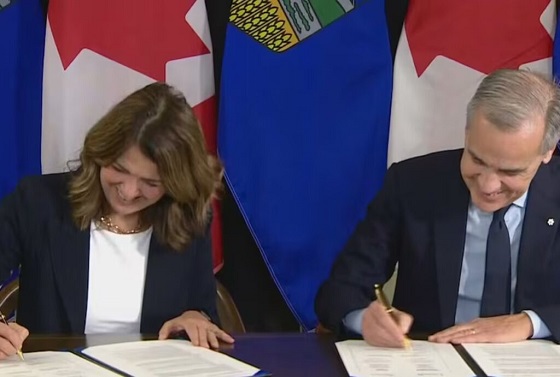Business
Solving the Housing Affordability Crisis With This One Cool Trick
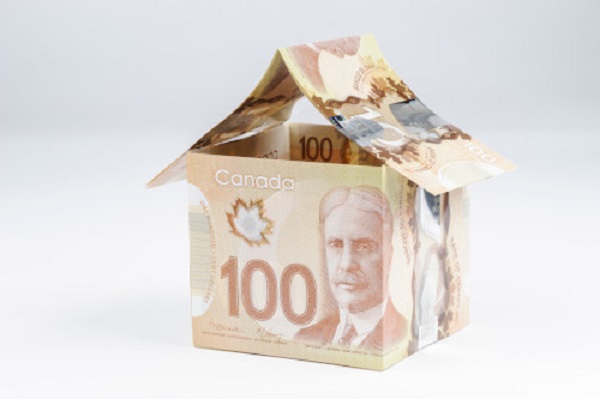
As you’ll soon see, local and provincial governments – if they were so inspired – could drop the purchase price on new homes by 20 percent. Before breakfast.
The Audit is a reader-supported publication. To receive new posts and support my work, consider becoming a free or paid subscriber.
It’s all about taxes and fees. This post will focus mostly on taxes and fees as they apply to new construction of relatively expensive detached homes. But the basic ideas will apply to all homes – and will also impact rentals.
Here are some estimated numbers to chew on. Scenarios based on varying permutations and combinations will produce different results, but I think this example will be a good illustration.
Let’s say that a developer purchases a single residential plot in Toronto for $1.4 million. In mature midtown neighborhoods, that figure is hardly uncommon. The plan is to build an attractive single family home and then sell it on the retail market.
Here are some estimates of the costs our developer will currently face:
- Construction costs on a 2,000 sq. ft. home (@ $350/sq. ft.): $700,000
- Land transfer taxes on the initial land purchase: $35,000
- Development fees: $100,000
- Permits and zoning/site approvals: $40,000
Total direct development costs would therefore come to $875,000. Of course, that’s besides the $1.4 million purchase price for the land which would bring our new running total to $2,275,000.
We’ll also need to account for the costs of regulatory delays. Waiting for permits, approvals, and environmental assessments can easily add a full year to the project. Since nothing can begin until the developer has legal title to the property, he’ll likely be paying interest for a mortgage representing 80 percent of the purchase price (i.e., $1,120,000). Even assuming a reasonable rate, that’ll add another $60,000 in carrying charges. Which will bring us to $2,335,000.
And don’t forget lawyers and consultants. They also have families to feed! Professional guidance for navigating through the permit and assessment system can easily cost a developer another $25,000.
That’s not an exhaustive list, by the way. To keep things simple, I left out Toronto’s Parkland Dedication Fee which, for residential developments, can range from 5 to 20 percent of the land value. And the Education Development Charges imposed by school boards was also ignored.
So assuming everything goes smoothly – something that’s far from given – that’ll give us a total development cost of $2,360,000. To ensure compensation for the time, work, investments, and considerable risks involved, our developer is unlikely to want to sell the home for less than $2,700,000.
But various governments are still holding their hands out. When the buyers sign an agreement of purchase, they’ll be on the hook for land transfer taxes and – since it’s a new house – HST. Ontario and Toronto will want about four percent ($108,000) for the transfer (even though they both just cashed in on the very same transfer tax for the very same land at the start of the process). And, even taking into account both the federal and Ontario rebates, getting the keys to the front door will require handing over another $327,000 for HST.
Here’s how development fee schedules currently look in Toronto:
And here’s a breakdown of the land transfer taxes assessed against anyone buying land:
In our hypothetical case, those fees would give us a total, all-in purchase price of $3,135,000. How much of that is due to government involvement (including associated legal and interest fees)? Around $695,000.
That’s $695,000 our buyers will pay – over and above the actual costs of land and construction. Or, in other words, a 22 percent markup.
Let’s put this a different way. If the cost of the median home in Canada dropped by 22 percent, then around 1.5 million extra Canadian households could enter the market. Congratulations, you’ve solved the housing affordability crisis. (Although supply problems will still need some serious work.)
Now it’s probably not realistic to expect politicians in places like the Ontario Legislature and Toronto City Council to give up that kind of income. But just lowering their intake by 50 or even 25 percent – and reducing the costs and pain points of acquiring permits – could make a serious difference. Not only would it lower home sale prices, but it would lower the barriers to entry for new home construction.
Just what were all those taxes worth to governments? Let’s begin with the City of Toronto. Their 2023 Financial Report tells us that land transfer taxes generated $944 million, permits and zoning applications delivered $137 million, and development fees accounted for $1.45 billion. Total city revenues in 2023 were $16.325 billion.
We’re told that all that money was spent on:
- Roads and transit systems
- Water and wastewater systems
- Fire and emergency services
- Parks and recreation facilities
- Libraries
Well, we do need those things right? We can’t expect the city to just eliminate fire and emergency services.
Wait. Hang on. I seem to recall being told that revenue from my property tax bill covered those services. Yes! My property tax did fund those things. Not 100 percent of those things, but a lot.
Specifically, Toronto property tax revenues cover 65 percent of the municipal costs for roads and transit systems, 85 percent of fire and emergency services, 75 percent of parks and recreation facilities, and 95 percent of library costs (even though very few people use public libraries any more).
Granted, property tax revenue covered only five percent of water and wastewater systems, but that’s because another 40 percent came from user fees (i.e., utility bills).
So revenues from land transfer taxes, developer fees, and permitting aren’t an insignificant portion of City income, but they’re hardly the linchpin propping the whole thing up either. City Council could respond to losing that income by increasing property taxes. Or – and I’m just throwing around random ideas here – they could reduce their spending.
Now what about the province? I couldn’t get a good sense of how much of their HST revenue comes specifically from new home sales, but Ontario’s 2023–24 consolidated financial statements tell us that provincial land transfer taxes brought in $3.538 billion. That would be around 1.7% of total government revenues. Again, a bit more than a rounding error.
Politics is about finding balances through trade offs. Sure, maintaining program spending while minimizing deficits is an ongoing and real challenge for governments. On the other hand, they all say they’re concerned about the housing crisis. Foregoing just one to five percent of revenues should, given the political payoffs and bragging rights that could follow, probably be an easy pill to swallow.
A few weeks ago I reached out to the City of Toronto Housing Secretariat and the Province of Ontario’s Municipal Affairs and Housing for their thoughts. I received no response.
The Audit is a reader-supported publication. To receive new posts and support my work, consider becoming a free or paid subscriber.
Agriculture
Growing Alberta’s fresh food future

A new program funded by the Sustainable Canadian Agricultural Partnership will accelerate expansion in Alberta greenhouses and vertical farms.
Albertans want to keep their hard-earned money in the province and support producers by choosing locally grown, high-quality produce. The new three-year, $10-milllion Growing Greenhouses program aims to stimulate industry growth and provide fresh fruit and vegetables to Albertans throughout the year.
“Everything our ministry does is about ensuring Albertans have secure access to safe, high-quality food. We are continually working to build resilience and sustainability into our food production systems, increase opportunities for producers and processors, create jobs and feed Albertans. This new program will fund technologies that increase food production and improve energy efficiency.”
“Through this investment, we’re supporting Alberta’s growers and ensuring Canadians have access to fresh, locally-grown fruits and vegetables on grocery shelves year-round. This program strengthens local communities, drives innovation, and creates new opportunities for agricultural entrepreneurs, reinforcing Canada’s food system and economy.”
The Growing Greenhouses program supports the controlled environment agriculture sector with new construction or expansion improvements to existing greenhouses and vertical farms that produce food at a commercial scale. It also aligns with Alberta’s Buy Local initiative launched this year as consumers will be able to purchase more local produce all year-round.
The program was created in alignment with the needs identified by the greenhouse sector, with a goal to reduce seasonal import reliance entering fall, which increases fruit and vegetable prices.
“This program is a game-changer for Alberta’s greenhouse sector. By investing in expansion and innovation, we can grow more fresh produce year-round, reduce reliance on imports, and strengthen food security for Albertans. Our growers are ready to meet the demand with sustainable, locally grown vegetables and fruits, and this support ensures we can do so while creating new jobs and opportunities in communities across the province. We are very grateful to the Governments of Canada and Alberta for this investment in our sector and for working collaboratively with us.”
Sustainable Canadian Agricultural Partnership (Sustainable CAP)
Sustainable CAP is a five-year, $3.5-billion investment by federal, provincial and territorial governments to strengthen competitiveness, innovation and resiliency in Canada’s agriculture, agri-food and agri-based products sector. This includes $1 billion in federal programs and activities and $2.5 billion that is cost-shared 60 per cent federally and 40 per cent provincially/territorially for programs that are designed and delivered by provinces and territories.
Quick facts
- Alberta’s greenhouse sector ranks fourth in Canada:
- 195 greenhouses produce $145 million in produce and 60 per cent of them operate year-round.
- Greenhouse food production is growing by 6.2 per cent annually.
- Alberta imports $349 million in fresh produce annually.
- The program supports sector growth by investing in renewable and efficient energy systems, advanced lighting systems, energy-saving construction, and automation and robotics systems.
Related information
Automotive
The $50 Billion Question: EVs Never Delivered What Ottawa Promised

Beware of government promises that arrive gift-wrapped in moral certainty.
The pattern repeats across the sector: subsidies extracted, production scaled back, workers laid off, taxpayers absorbing losses while executives collect bonuses and move on, and politicians pretend that it never happened. CBC isn’t asking Justin Trudeau, Katherine McKenna or Steven Guilbeault any questions about it. They are not asking Mark Carney.
Buy an electric vehicle, they said, and you will save the planet, no questions asked. Justin Trudeau and several of his ministers proclaimed it from podiums. Environmental activists, often cabinet members, chanted it at rallies. Automotive executives leveraged it to extract giant subsidies. For over a decade, the message never wavered: until $50 billion in public money disappeared into corporate failures, and the economic wreckage became impossible to ignore.
Prime Minister Mark Carney, himself a spokesperson for the doomsday culture, inherited the policy disaster from Trudeau and still clings to the wreckage. The 2026 EV sales target sits suspended, a grudging acknowledgment that reality refused to cooperate with radical predictions and Ottawa’s mandates. Yet the 2030 and 2035 targets remain federal law, monuments to a central-planning exercise that delivered the opposite of what it promised.
Their claims were never quite true. Electric vehicles were pure good. They were marketed as unconditionally cleaner than conventional cars, a transformation so obviously beneficial that questioning it invited accusations of climate denial. Government messaging suggested switching to an EV meant immediate environmental virtue. The nuance, the conditions, and the caveats were conveniently omitted from the government sales pitch that justified tens of billions of your money into subsidies for foreign EV manufacturing and corporate advancement.
The Reality Ottawa Is Hiding
Research documented the conditional nature of EV benefits for over a decade, yet Ottawa proceeded as if the complexity didn’t exist. Studies from China, where coal dominates electricity generation, showed as early as 2010 that EVs in coal-dependent regions had “very limited benefits” in reducing emissions compared to gasoline vehicles. In Northern China, where electricity generation is over 80% coal-based, EVs could produce lifecycle emissions comparable to or even higher than those of conventional cars. A 2015 Chinese study found that EVs generated lifecycle emissions that were only 18% lower than those of gasoline vehicles, compared to 40-70% reductions in regions with cleaner grids.
Volvo began publishing transparent lifecycle assessments for its first EV in 2019, making it the first major automaker to document the significant upfront emissions from battery production publicly. Their 2021 C40 Recharge report, released during the COP26 climate summit in Glasgow, revealed that manufacturing an EV produces 70% more emissions than building a comparable conventional vehicle. But there are no CBC reports about that. The Volvo report showed that an EV charged on a coal-heavy global grid required 68,000 to 110,000 miles of driving to break even with a conventional car, potentially more than half the vehicle’s usable lifetime. For drivers with low annual mileage in regions with dirty electricity grids, that breakeven point could take six to nine years to reach, if ever.
Battery manufacturing location proved enormously consequential. Production in China, powered by coal, generates 60-85% higher emissions than manufacturing in Europe or the United States. Yet Canadian subsidies flowed to companies regardless of where batteries were made or where vehicles would be charged. The federal government committed over $50 billion without requiring the environmental due diligence that should precede such massive public investment.
The Canadian government never acknowledged Volvo’s findings. Not once. A search of federal policy documents, ministerial statements, and environmental assessments from 2019 forward reveals no mention of the lifecycle complexities Volvo documented. Ottawa’s silence on inconvenient research speaks loudly about how ideology trumped evidence in shaping EV policy.
You want to build a pipeline in Canada. There will be 8 to 10 years of red tape and environmental impact assessments. But if you say you want to make EVs, Laurentian provincial premiers and the feds will bend over backwards. They handed over billions while the economy and social conditions in their cities decayed.
The environmental promise was conditional: clean electricity grids, high annual mileage, manufacturing in regions with low-carbon energy, and vehicles driven long enough to offset the massive carbon debt from battery production. Remove those conditions, and the environmental case collapses. The subsidies, however, remained unconditional.
The Subsidies Flow, The Companies Fail
Corporate casualties now litter the landscape. Northvolt received $240 million in federal subsidies to build a Quebec battery plant before filing for bankruptcy protection in November. Lion Electric, Quebec’s homegrown EV manufacturer, burned through $100 million in government support before announcing massive layoffs and production cuts. Arrival, which secured subsidies for its electric van facility, collapsed entirely, leaving taxpayers with nothing but broken promises.
Stellantis and LG Energy Solution extracted $15 billion, the most extensive corporate handout in Canadian history, for their Windsor battery plant. Volkswagen secured $13 billion for St. Thomas. Provincial governments layered on additional incentives. The public investment dwarfed any plausible return, yet the money kept flowing based on environmental claims the government either never bothered to verify or suppressed from its own documents and reports.
Despite this flood of subsidies and regulatory coercion, Canadian consumers rejected the offering. Even with massive incentives, EVs accounted for only 15% of new vehicle sales in 2024, far short of the mandated 20% target for 2026, let alone the 60% demanded by 2030. When federal subsidies ended in early 2025, sales collapsed to 9%, revealing the limited consumer demand. Dealer lots overflow with unsold inventory. Manufacturers scaled back production plans. The market spoke; Ottawa is only half listening.
The GM plant in Oshawa serves as a cautionary tale. Thousands of jobs lost. Promises of green manufacturing jobs evaporated. Workers who believed government assurances that EV mandates would secure their livelihoods found themselves unemployed as companies redirected production or collapsed entirely. The pattern repeats across the sector: subsidies extracted, production scaled back, workers laid off, taxpayers absorbing losses while executives collect bonuses and move on, and politicians pretend that it never happened. CBC isn’t asking Justin Trudeau, Katherine McKenna or Steven Guilbeault any questions about it. They are not asking Mark Carney.
The Central Planning Failure
The EV disaster illustrates why economies run by political offices never succeed. Friedrich Hayek observed that “The curious task of economics is to demonstrate to men how little they really know about what they imagine they can design.” Politicians and bureaucrats in Ottawa do not possibly possess the dispersed knowledge embedded in millions of individual economic decisions. But they think that they do.
Markets aggregate information that no central planner can access. Consumer preferences for vehicle range, charging convenience, and total cost of ownership. Regional variations in electricity generation and the pace of grid decarbonization. Battery technology improvements and supply chain vulnerabilities. Resource constraints and mining capacity. These factors interact in ways too complex for any cabinet planning committee to comprehend, yet Ottawa presumed to mandate outcomes a generation in advance.
Federal ministers with no experience in automotive manufacturing or battery chemistry presumed to direct the transformation of a trillion-dollar industry. Career bureaucrats drafted regulations determining which vehicles Canadians could purchase years hence, as if they possessed prophetic knowledge of technological development, grid decarbonization rates, consumer preferences, and global supply chains.
The EV mandate attempted to force a technological transition. It was an economic coup. Environmental claims proved conditional at best. Billions in subsidies flowed to failing companies. Taxpayers absorbed losses while corporations extracted rents and walked away. It worked well for the corporations, but the coup failed Canadians and Canadian workers. They are not building back better.
Green ideology provided perfect cover for this overreach. Invoke climate emergency, and fiscal responsibility vanishes. Question subsidies and you’re labelled a denier. Point out that environmental benefits depend on specific conditions, and you’re accused of spreading misinformation. The rhetorical shield, aided and abetted by a complicit media unable to see past its own financial interests, allowed government to bypass scrutiny that should attend any massive industrial policy intervention.
The Trust Deficit
As Canadians learn that EV environmental benefits depend heavily on electricity sources and driving patterns, as they watch subsidized companies collapse, as they discover how thoroughly the promise was oversold and how completely Ottawa ignored contrary evidence, trust in government erodes. This badly needed skepticism will spread beyond EVs and undermine legitimate government functions.
It would be good if future government claims about environmental policy face rising skepticism. Corporations wrapping themselves in green rhetoric may be viewed as con artists. Environmental activists who championed these policies may see their credibility destroyed. When citizens conclude their government systematically misled them about costs, benefits, and basic facts while suppressing inconvenient research, liberal democracy itself suffers. But that may not happen at all in Laurentian LaLa-land or in the Pacific Lotusland.
Over fifty billion dollars are distributed among local and foreign industrialists, while tens of thousands live in tents in Laurentian cities.
The EV debacle demonstrates that overselling policy benefits, suppressing complexity, and using ideology to short-circuit debate produce a backlash far worse than honest acknowledgment of nuance would have. The damage compounds when governments commit billions based on conditional environmental claims they never verified, then remain silent when industry-leading manufacturers publish data revealing those conditions.
The Path Forward
Canada needs a full repeal of the EV mandate and a complete retreat from Ottawa directing market decisions. The EV law must be struck, not merely paused. The 2030 and 2035 targets must be abandoned entirely. No new subsidies for EV production (or any other production). No bailouts for failed battery plants. No additional funds for charging infrastructure. And absolutely no subsidies for conventional or hybrid vehicle production justified by the same environmental complexity that should have prevented EV mandates in the first place.
Let markets determine which technologies Canadians choose. If EVs deliver genuine value for specific consumers in specific circumstances—those with clean electricity grids, high annual mileage, and long vehicle ownership timelines—those consumers will buy them without mandates or subsidies. If hybrids or improved conventional vehicles better serve other consumers’ needs, manufacturers will produce them without government direction.
The aggregated wisdom of millions of economic actors making decisions based on their actual circumstances will produce better outcomes than any planning committee in Ottawa. Some Canadians will find EVs deliver environmental and financial benefits. Others will not. Both conclusions can be correct simultaneously, a nuance Ottawa spent $50 billion refusing to acknowledge.
Markets work because no one has to know everything. Central planning fails because someone must. I wish I could say that Ottawa has learned this lesson the expensive way. Or whether Laurentians will remember it at the next election. Or whether the same politicians and bureaucrats who delivered this disaster will identify the next technology to mandate and subsidize, armed with new promises that reality will eventually expose as conditional at best.
But let’s keep our dreams in check. It seems more likely, given their ideological make-up and propensities for certainty, that low-information Laurentian and Pacific Coast voters will go right for the next green-washed fantasy that the feds and provincial governments will put in front of them, provided it is coiled into a catchy slogan.
Subscribe to Haultain Research.
For the full experience, and to help us bring you more quality research and commentary,
please upgrade your subscription.
-
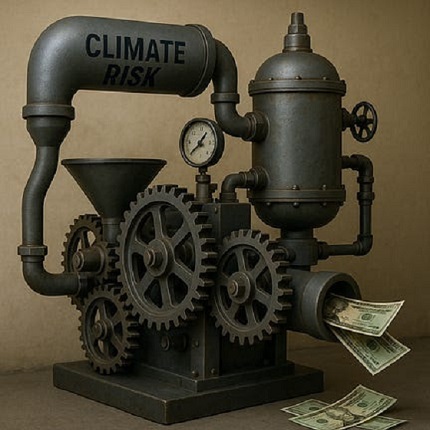
 Business2 days ago
Business2 days agoThe Climate-Risk Industrial Complex and the Manufactured Insurance Crisis
-

 Health2 days ago
Health2 days agoThe Data That Doesn’t Exist
-

 Crime2 days ago
Crime2 days agoInside the Fortified Sinaloa-Linked Compound Canada Still Can’t Seize After 12 Years of Legal War
-

 Great Reset24 hours ago
Great Reset24 hours agoProposed ban on euthanasia for mental illness sparks passionate debate in Canada’s Parliament
-

 Censorship Industrial Complex23 hours ago
Censorship Industrial Complex23 hours agoLiberals gain support for ‘hate speech’ bill targeting Bible passages against homosexuality
-

 Automotive11 hours ago
Automotive11 hours agoThe $50 Billion Question: EVs Never Delivered What Ottawa Promised
-
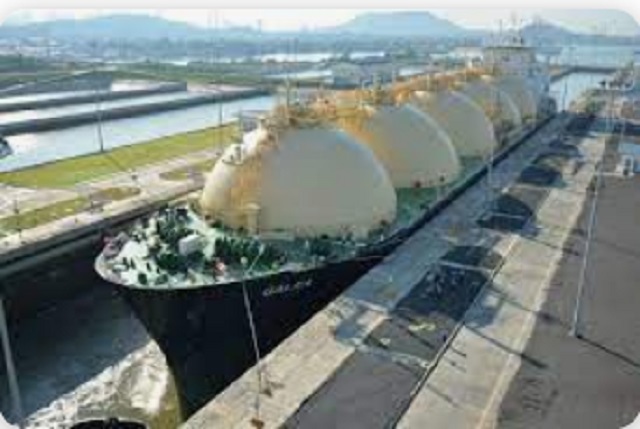
 Business1 day ago
Business1 day agoCanada Can Finally Profit From LNG If Ottawa Stops Dragging Its Feet
-

 Agriculture9 hours ago
Agriculture9 hours agoGrowing Alberta’s fresh food future









